Thinking Footwear through a Regenerative Polyculture
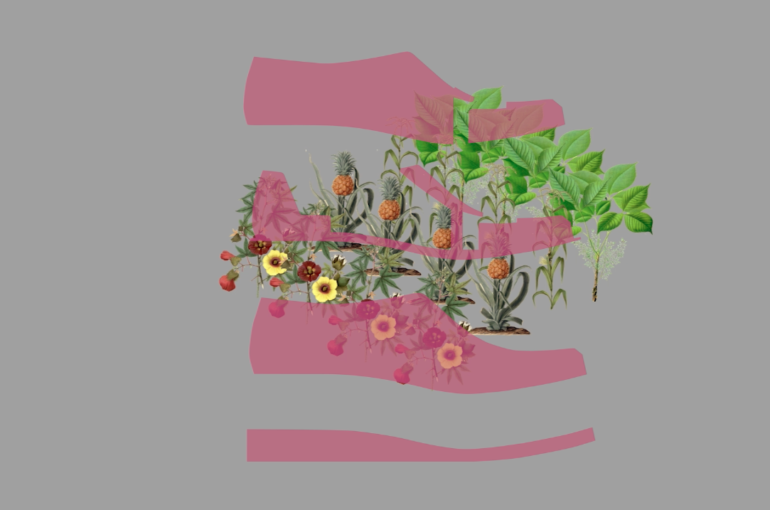
The starting point of the project Syntropia is to develop a shoe based on biomaterials which can grow on and be harvested from the same regenerative polycultural field.
Regenerative agriculture is a system of farming principles and practices that increases biodiversity, enriches soils, improves watersheds, and enhances ecosystem services. In opposition to industrial monoculture, multiple crops, from grasses to trees, and animals are farmed all together, with the objective of fostering biodiversity and bringing back health to soil. For example, instead of growing one crop, which is depleting the soil of the ever same nutrients, a variety of plants is grown together subtracting and adding nutrients to the ecosystem at the same time. These practices, currently in use for food production are now being explored for the production of materials. Particularly in the field of materials and systems of production for fashion we can see an ever growing recognition of the need to rethink processes from the seed to the garment. An interesting initiative/project to look at here is fibreshed by Rebecca Burgess.
There are two main aspects to be considered in the development, on one hand the technical requirements the materials need to fulfil to be used in footwear and on the other hand the possibilities/resources a geographically localised field could provide us with.
If, for example, we are looking at using a flexible polymer (flexible bioplastic) for the outsole of the shoe, based on Polylactic Acid (PLA) which is usually made from corn starch, the questions could be
Technical Requirements:
What are the specifications in relation to hardness, flexibility, abrasion, etc.?
What technologies/processes can be used to manipulate the material?
What quantities do we need?
Agricultural Requirements:
If our goal is to create a polycultural field which does not rely on the input of fertilisers/pesticides or high amounts of water:
How do you combine the species to be grown together and in which quantities do you have to grow them
How do we balance these requirements with the productive quantities required for the production of the shoes?
For the experimentation and development of the application of materials and technologies we have our co-creation partner Haratech working with us on producing strategies for the prototypes of components and shoes.
For everything concerning the actual design of a regenerative polycultural field we had to look for expertise outside of the Refream consortium. With the rough idea of the Mediterranean Sea basin as a possible geographical location and Portugal as one of the main footwear producing countries in Europe, we found the Spanish agronomist Fernando Bautista Expósito, whose expertise is based in Spain, which also has a long tradition in footwear manufacturing. Together with Fernando we decided to focus on the region of Andalucia as geographic and climatic framework for our field, which from then on influenced and directed the further development of the research.
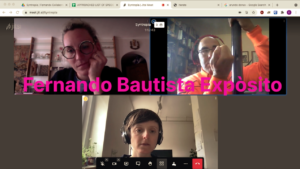 Together we structured the collaboration process as a constant dialogue, between our knowledge on bio based materials and production processes, and Fernando’s deep understanding of the climatic conditions, varieties of species which could thrive in those conditions and their ability to be cropped in a polycultural setting.
Together we structured the collaboration process as a constant dialogue, between our knowledge on bio based materials and production processes, and Fernando’s deep understanding of the climatic conditions, varieties of species which could thrive in those conditions and their ability to be cropped in a polycultural setting.
Starting from the simplified construction of the shoes (for more info see Syntropia) where each component (Upper, Frame, Lining, Outsole) has a specific function and a consequential array of potential materials from which it could be manufactured, we are looking for following material typologies: Polymer, Coarse Fibre, Thread/textile fibres, Bio leather and finishing products such as oils and wax.
Outsole and frame
The outsole and frame need to be constructed with a flexible resistant material which can absorb pressure, abrasion, etc. Here, we focused on the use of polymers combined with fibres. Polymers give the flexibility and absorption quality, fibres can increase the durability of the material. We also intend to use a composite of fibres and polymers in order to reduce the amount of polymer needed, due to it being a resource which requires high processing and is usually extracted from crops which have high land use and water demand (flexible PLA) or high quantity of crops to produce enough material (Rubber).
Lining and Upper
These two parts can be made using standard fibres and fibre manipulating processes, prefabricated textiles/ textile processes, animal based leathers and/or alternative substitutes for leather such as fibre felts and funghi grown sheet materials, among others.
After defining the general characteristics necessary for the individual components of the shoe we generated an initial list of species and materials commonly available on the market. This allowed us to create a first archive of physical samples to study, which we also used for further experimentation.
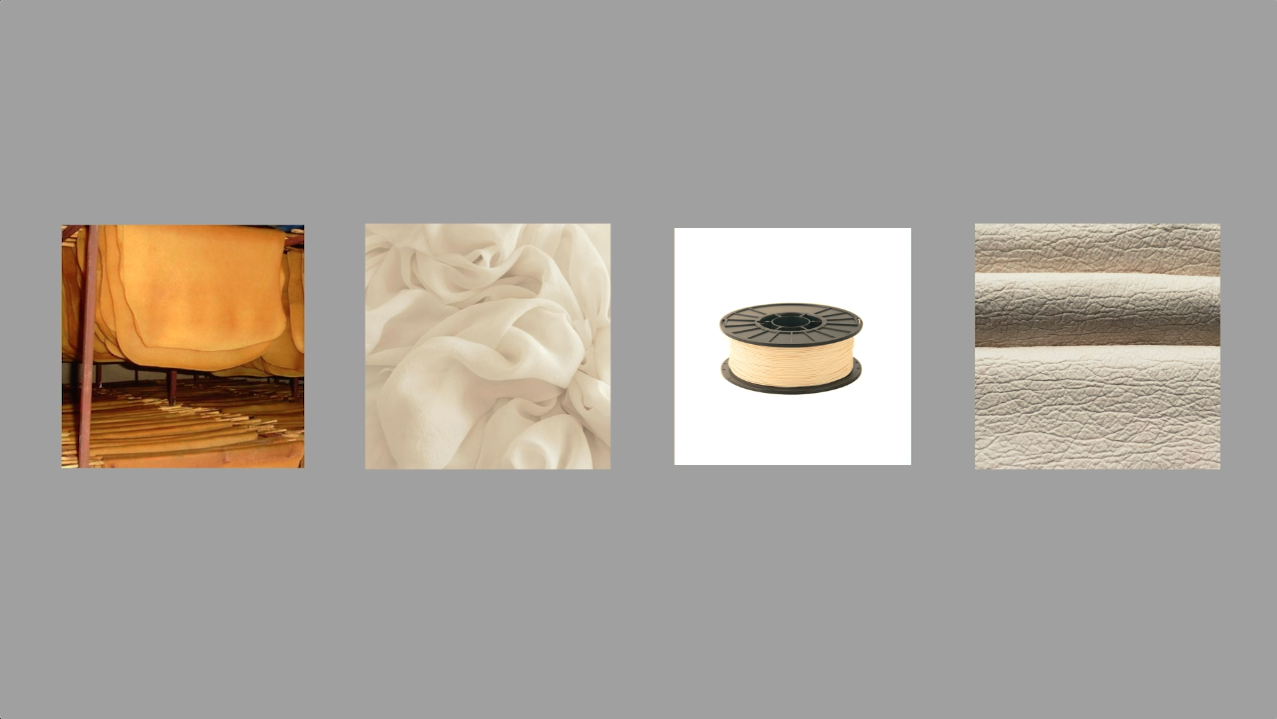
Starting from the initial list of plants we created, Fernando evaluated the already present species in terms of their climatic needs and their presence in the agricultural landscape of the Iberian Peninsula and added relevant species with similar and/or complimentary characteristics already growing in Andalucia. He also expanded the range of information from material production to include also the ideal climatic conditions and other relevant information connected to the potential or problematic growth of these species.
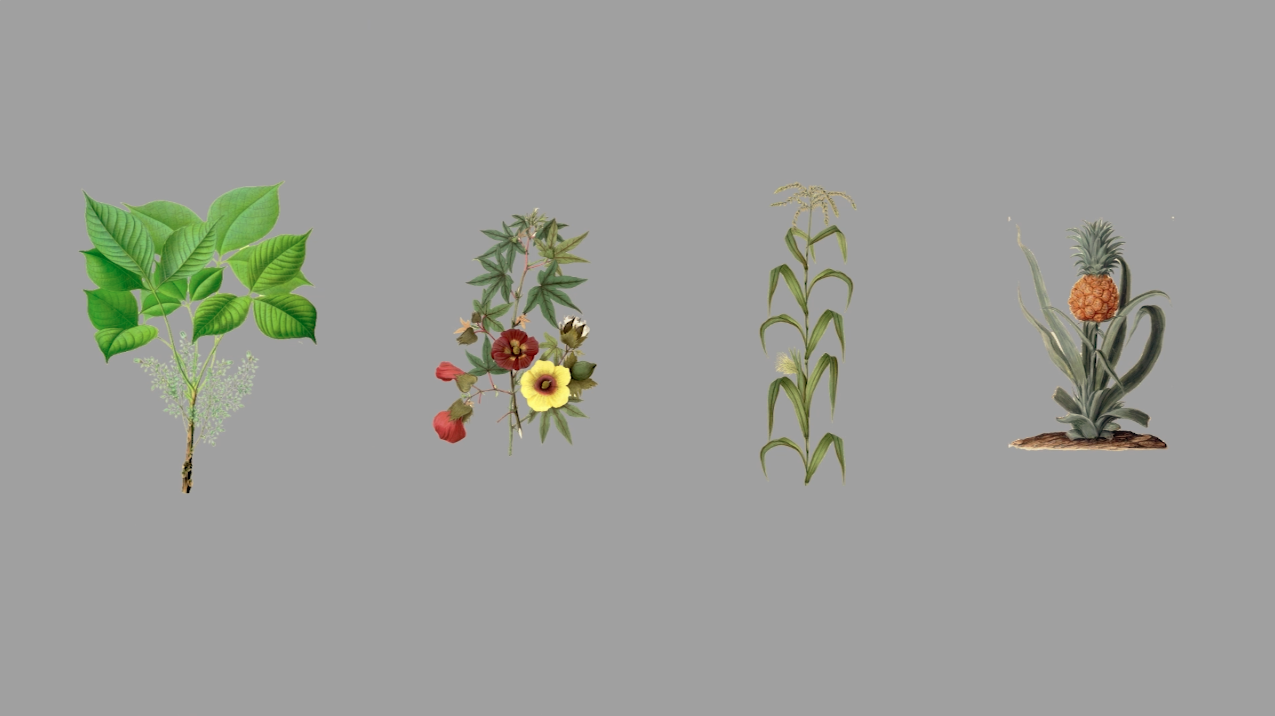
Since the initial iteration the list has become an archive of a variety of different aspects, allowing us to further investigate production processes and material use. As the spectrum of species taken into consideration got wider, it gave us the opportunity of researching into historical processes of transformation and historical uses. While most of the species played an important role in the world of manufacturing and agriculture prior to the industrial and the green revolution, they might have been disregarded, in spite of being highly performative, because of their inability to thrive in an industrial monocultural setting.
While working on the theoretical agricultural aspects of the project, the material experimentations we are working on with Haratech will guide us in further defining the characteristics of fibres and polymers we are looking for. These parameters will in turn further influence our selection of species and will define the next phases of material experimentation, when, ideally, we will start working with the actual species which could grow in the polyculture we are developing.
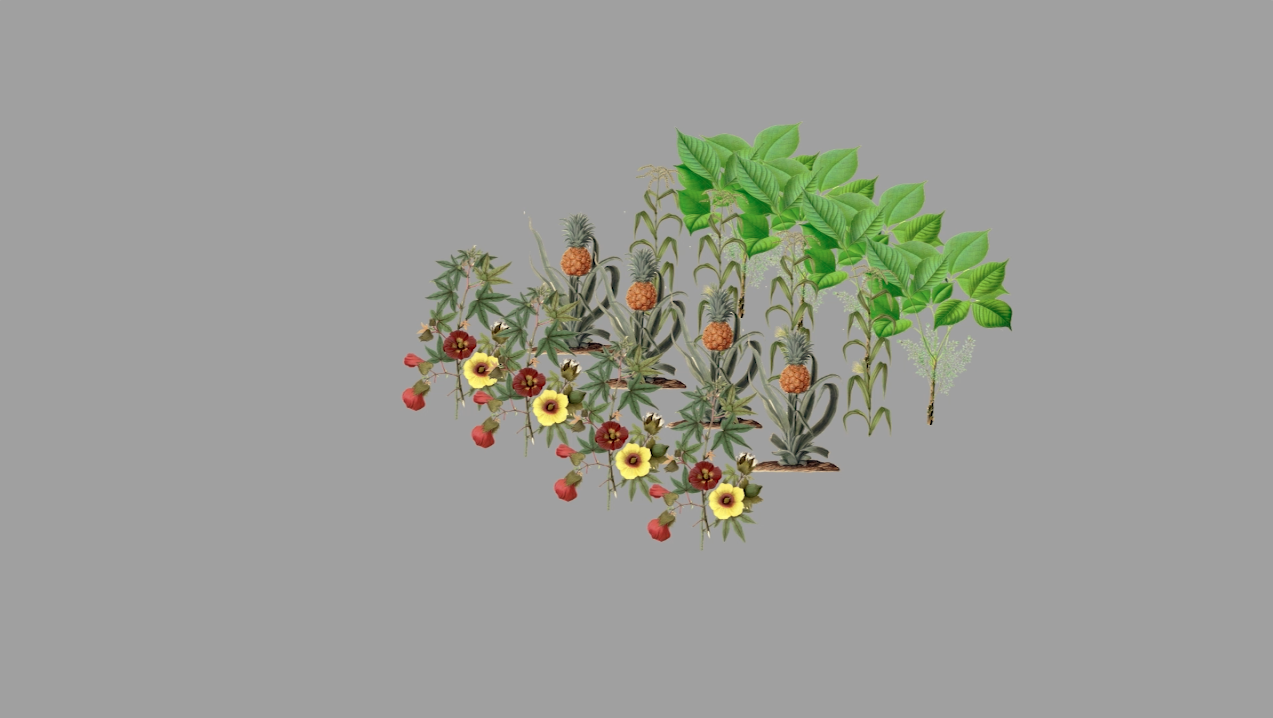
In parallel Fernando is using a software of geographical information (QGIS) to map the optimal growing areas for the species we have identified so far. Bringing this information to an actual geo-economical map is opening up new interesting considerations, such as attempting to identify an even smaller geographical area of interest in relation to its proximity to existing footwear manufacturing districts, fabric producing areas, etc.
This whole process of research and development taking into consideration environmental multispecies needs together with technical manufacturing requirements is as new to us as it is to Fernando. We are learning new enriching concepts at every step of the collaboration and we feel highly motivated that the concept and approach we are developing can be relevant as much for the specific context of sustainable footwear manufacturing in Mediterranean climate, as for other localities and other production processes. Therefore, the documentation and openly sharing the process is just as important to us as the “final” results themselves.





